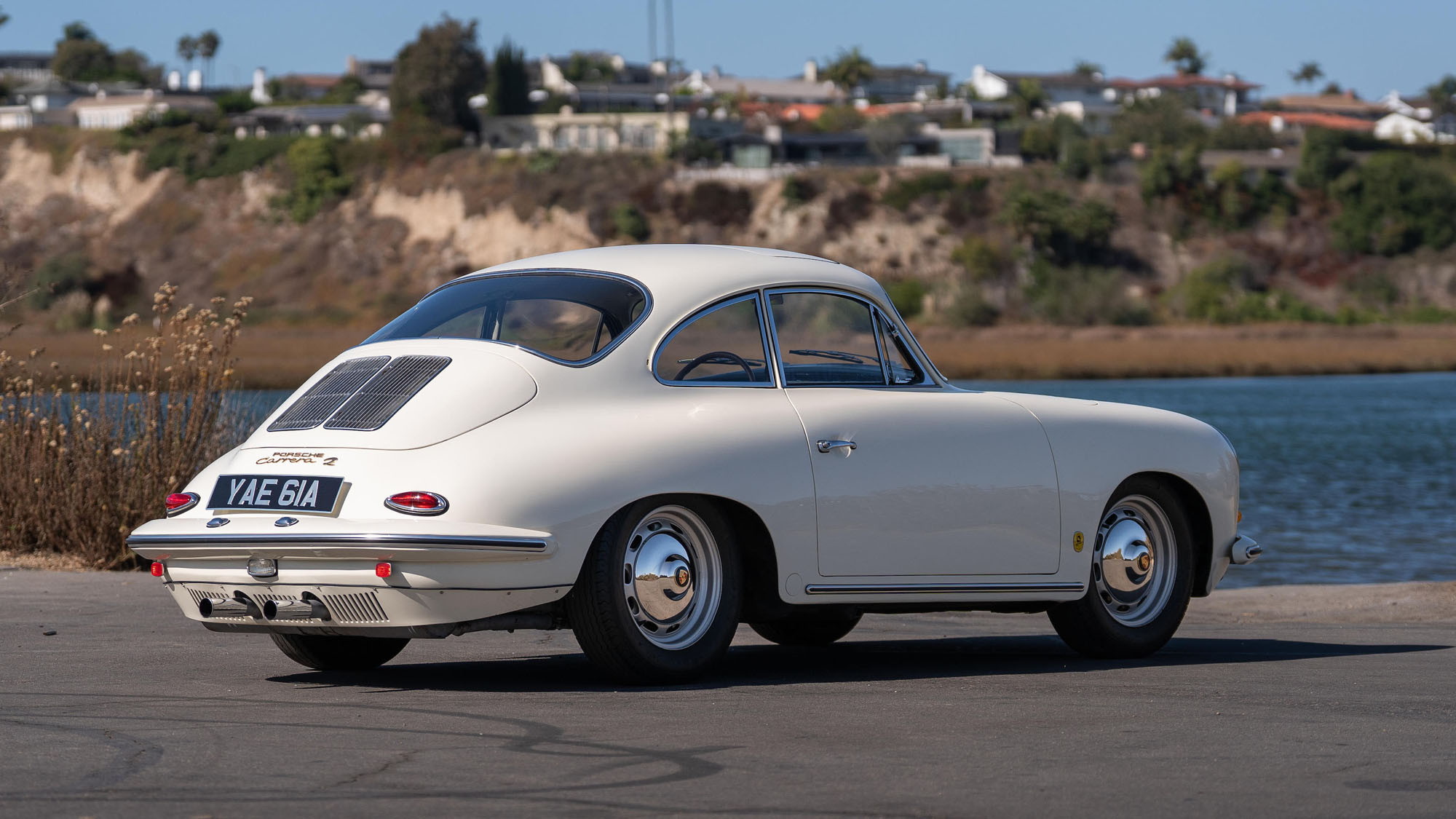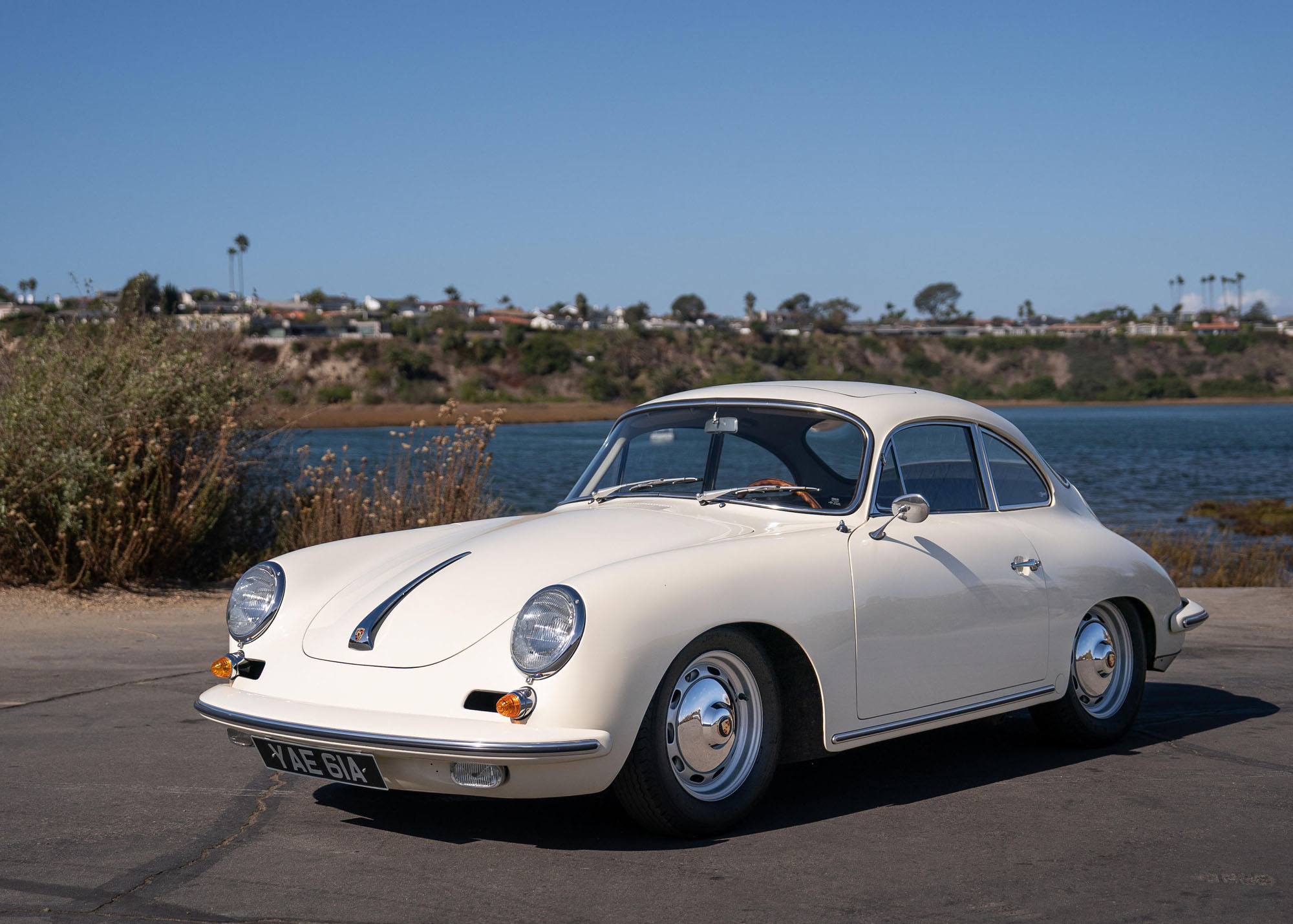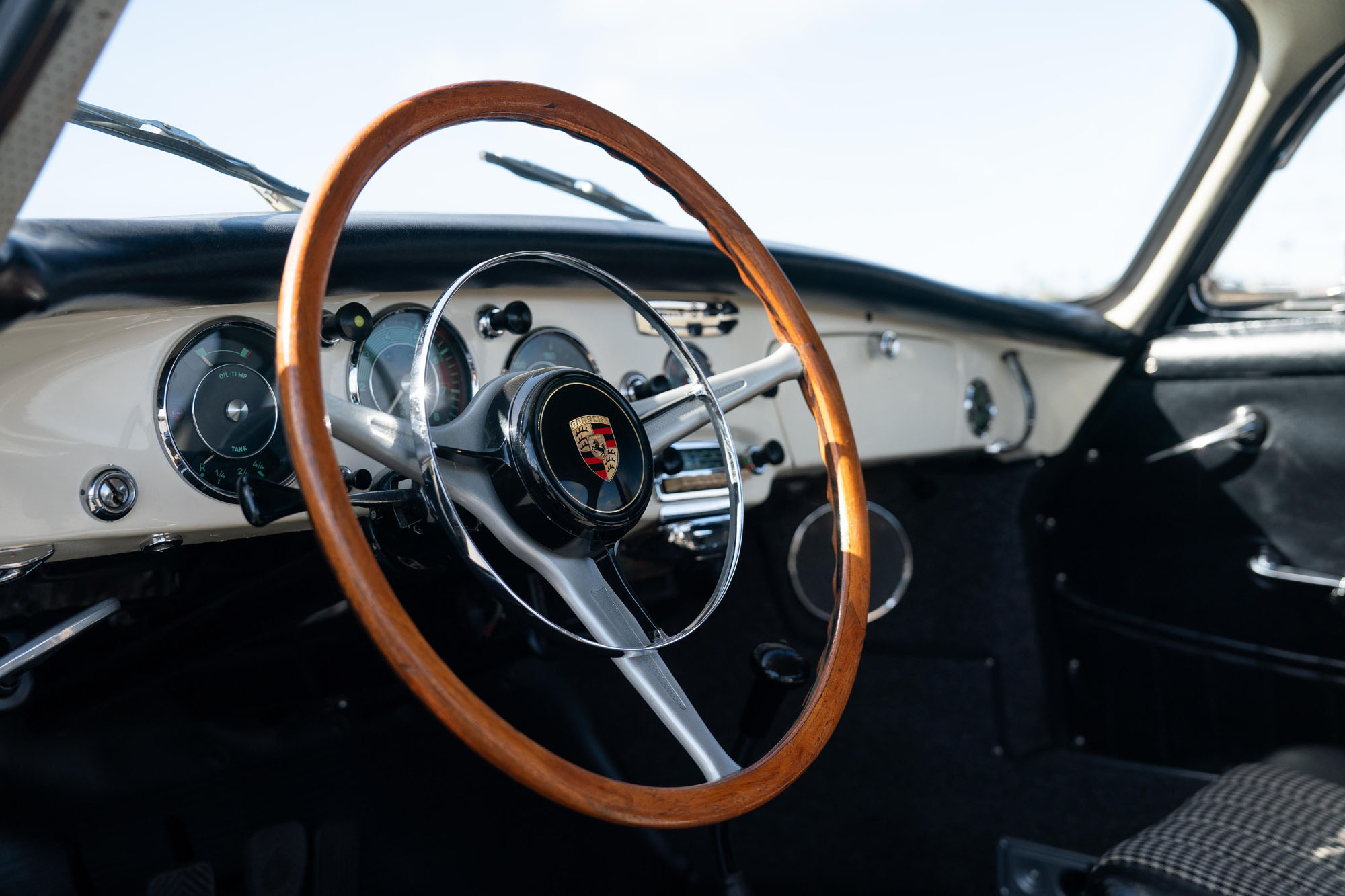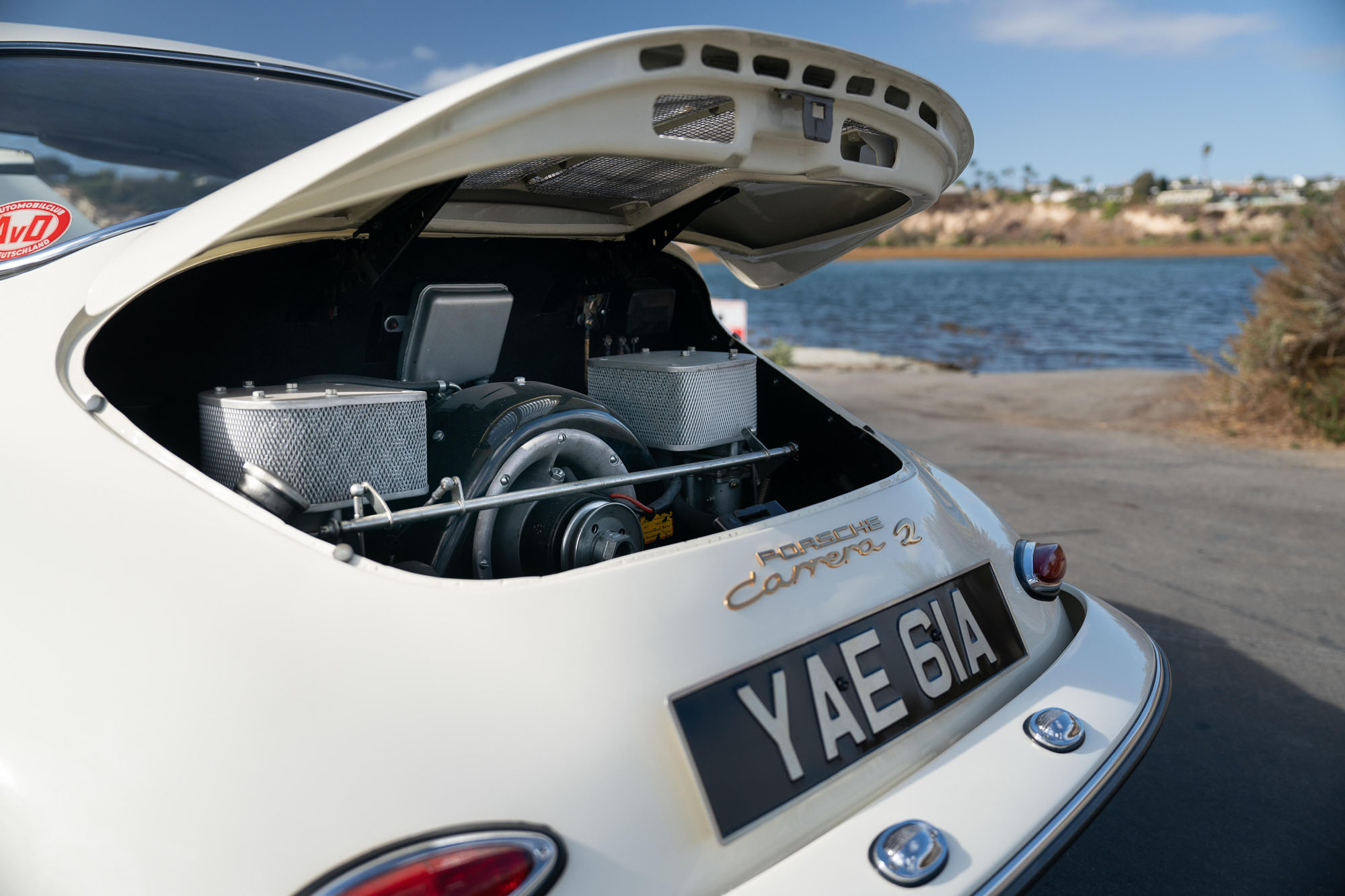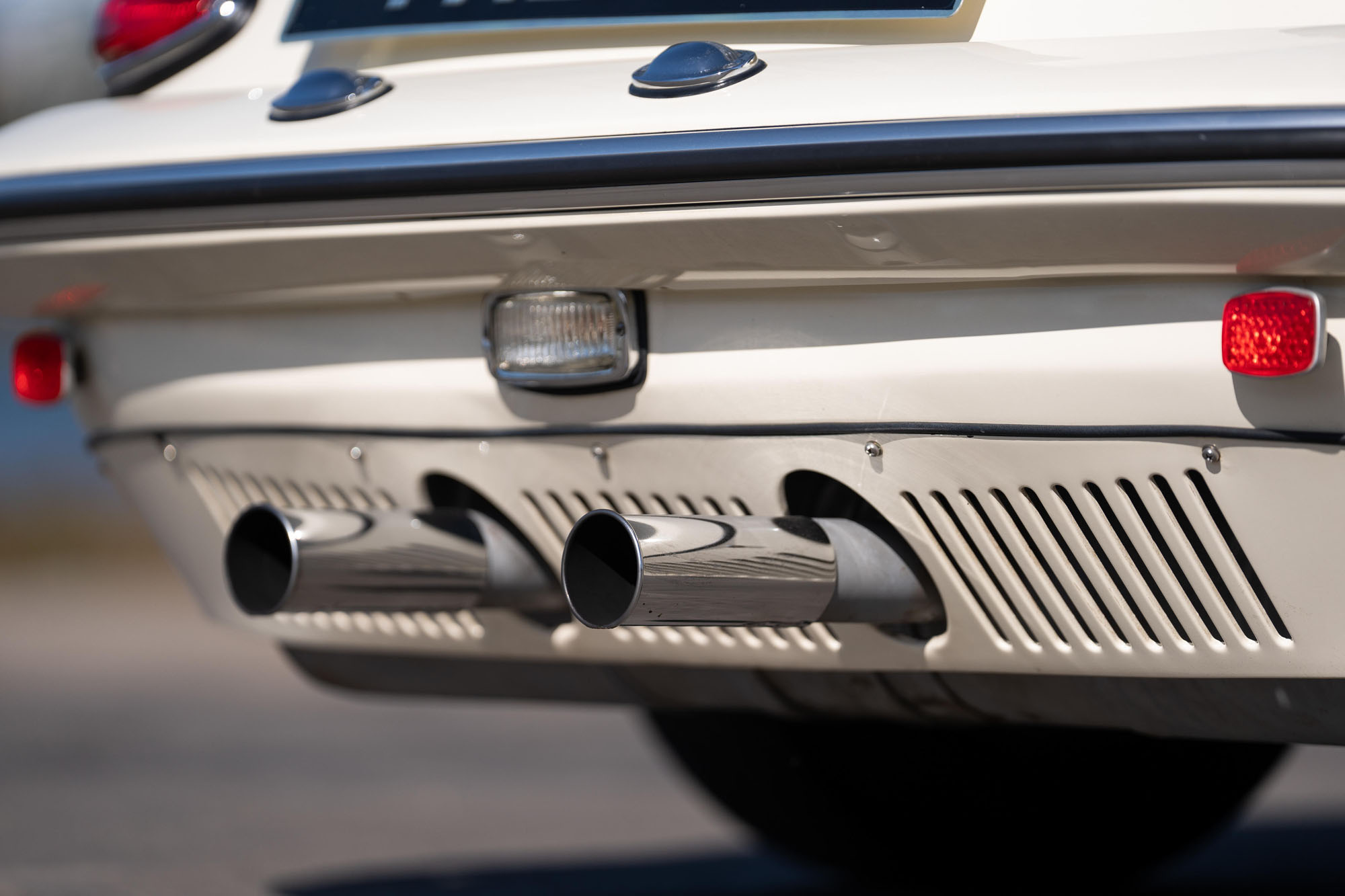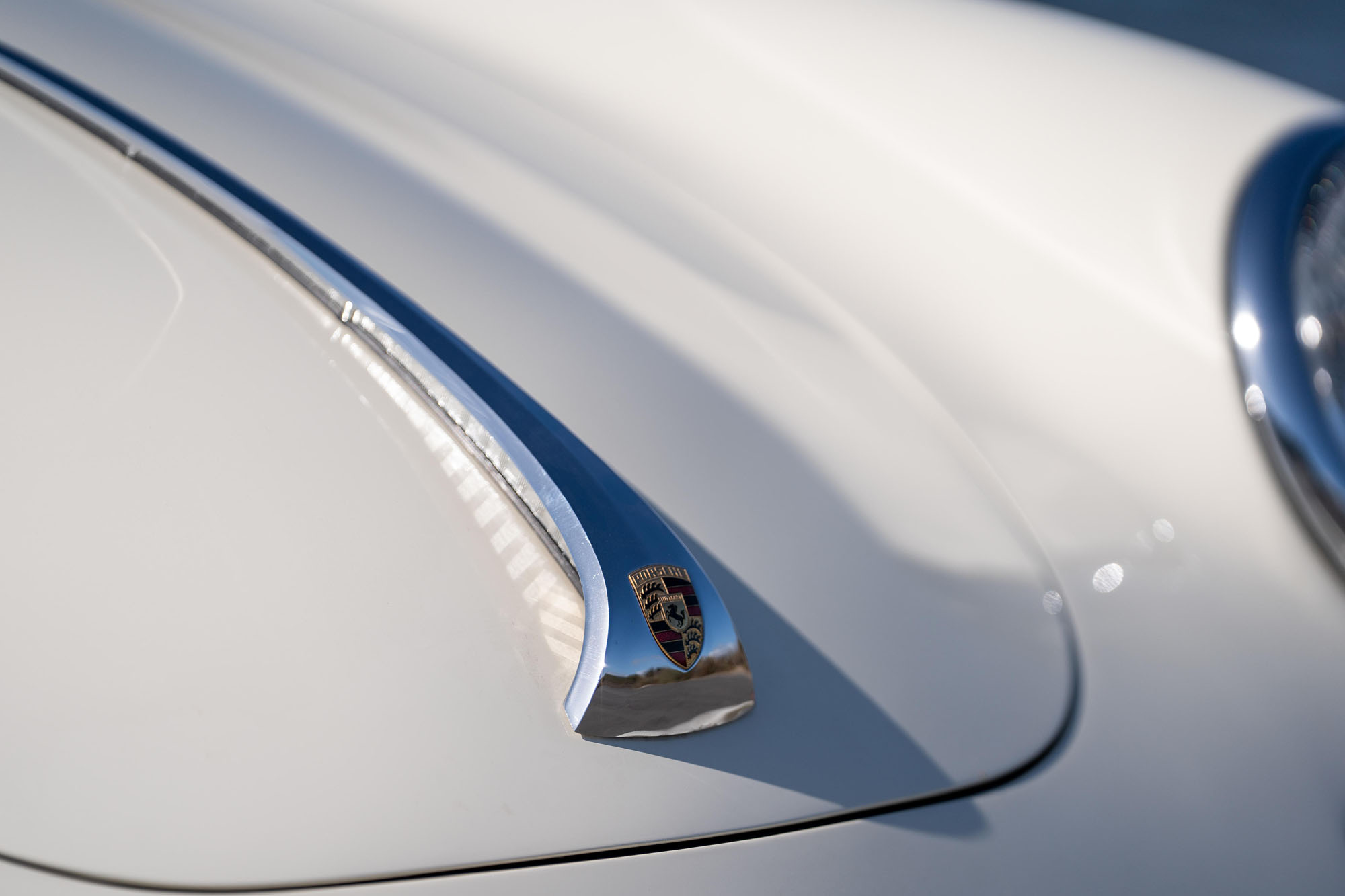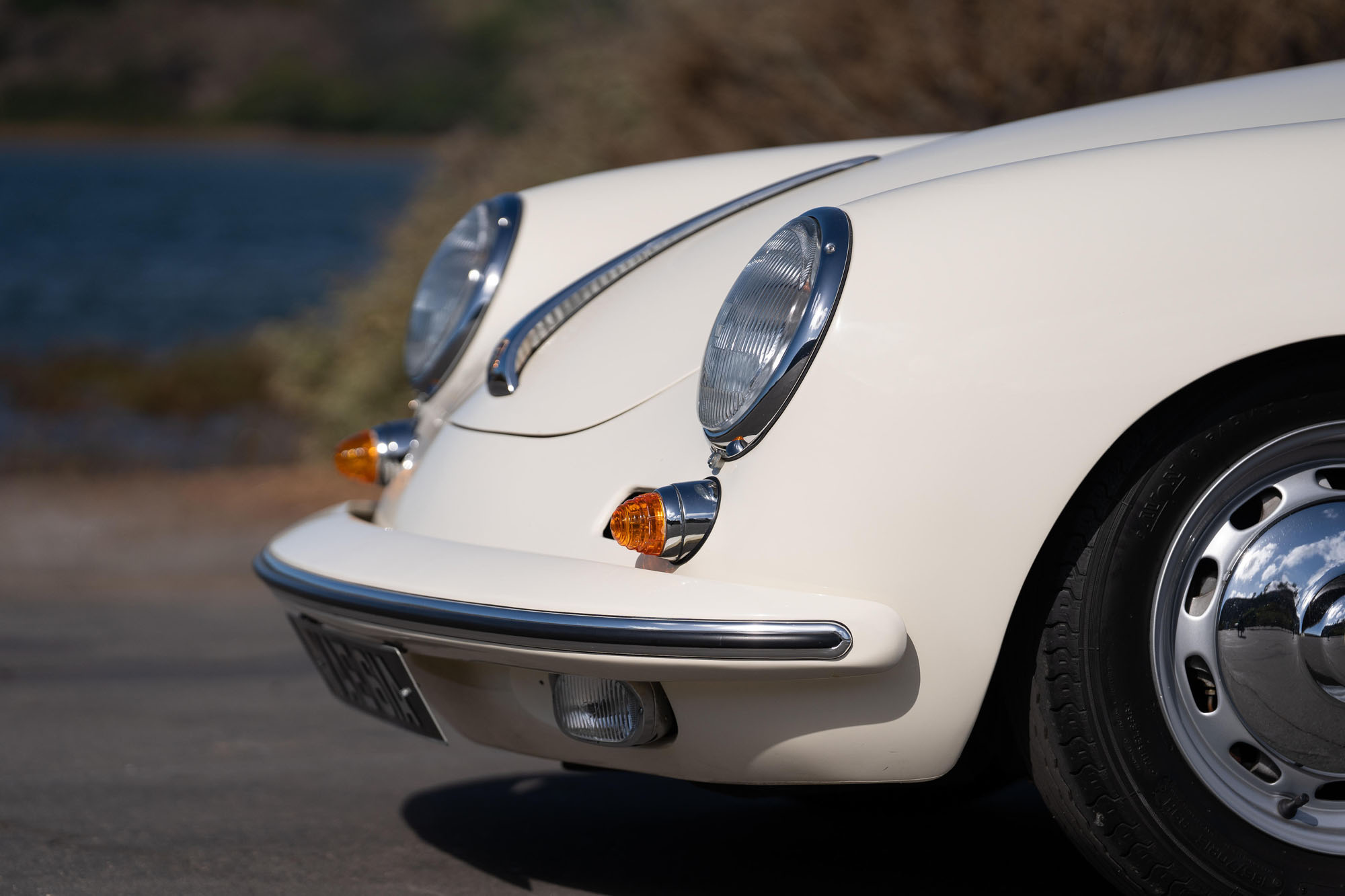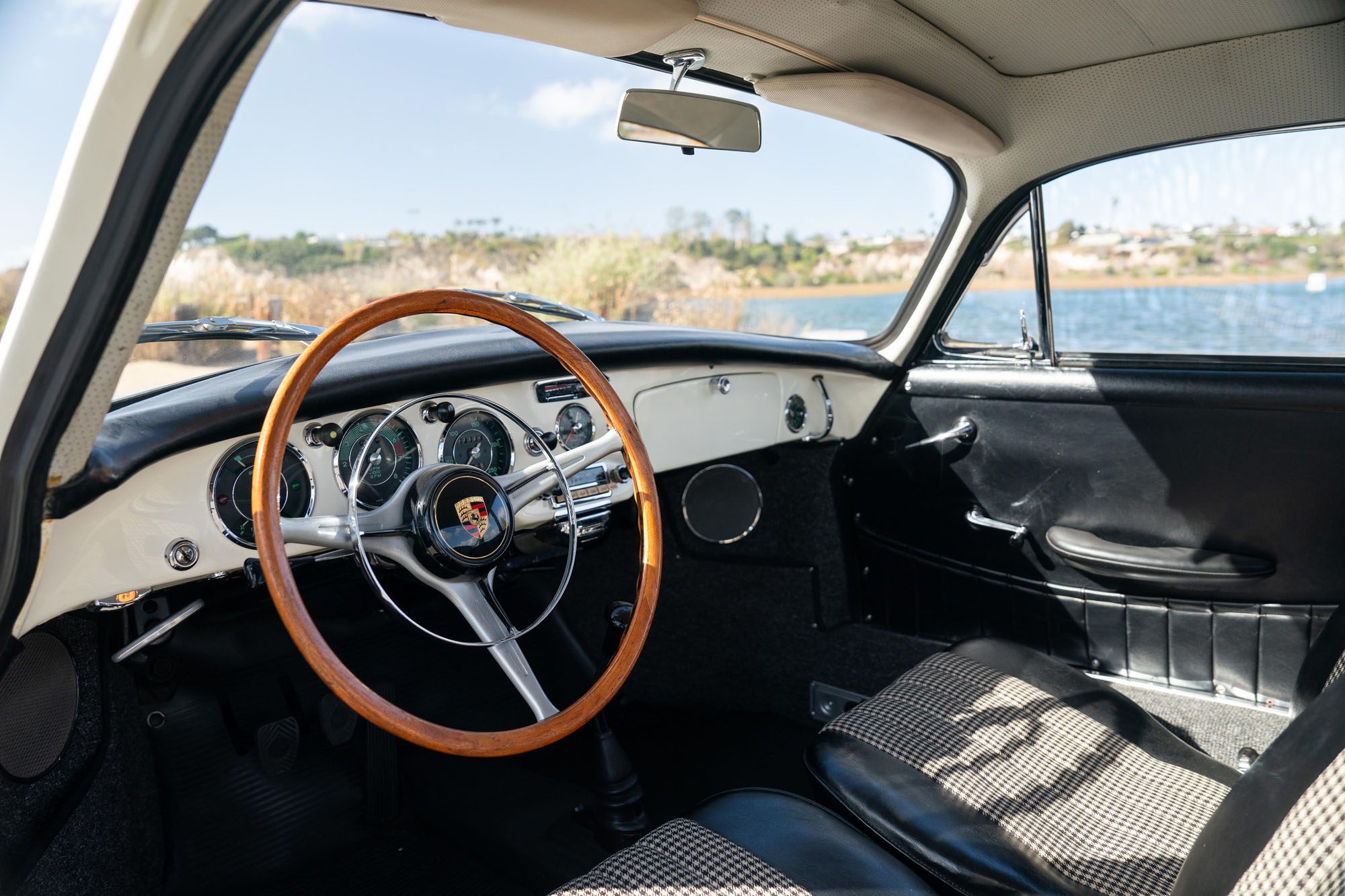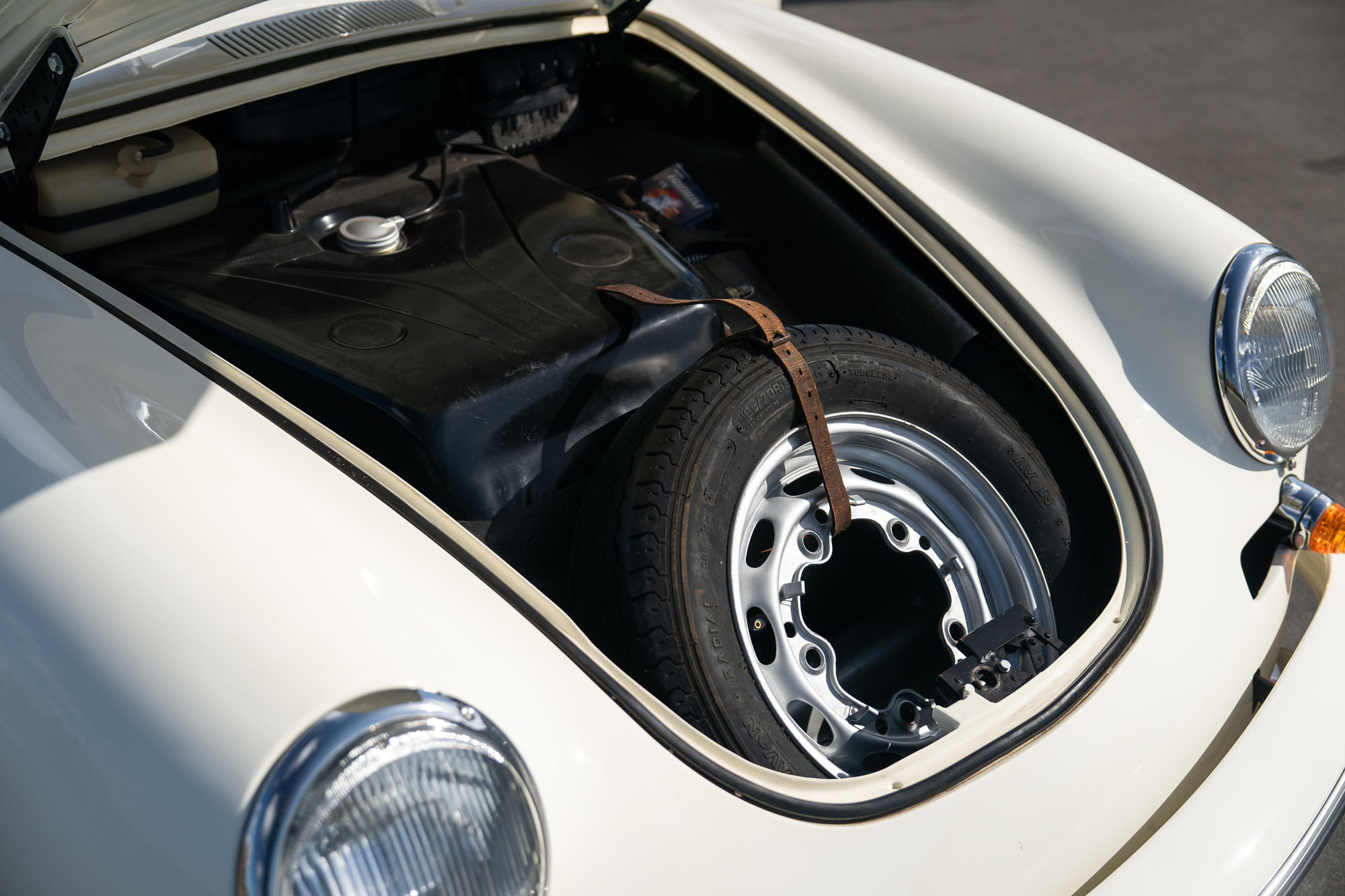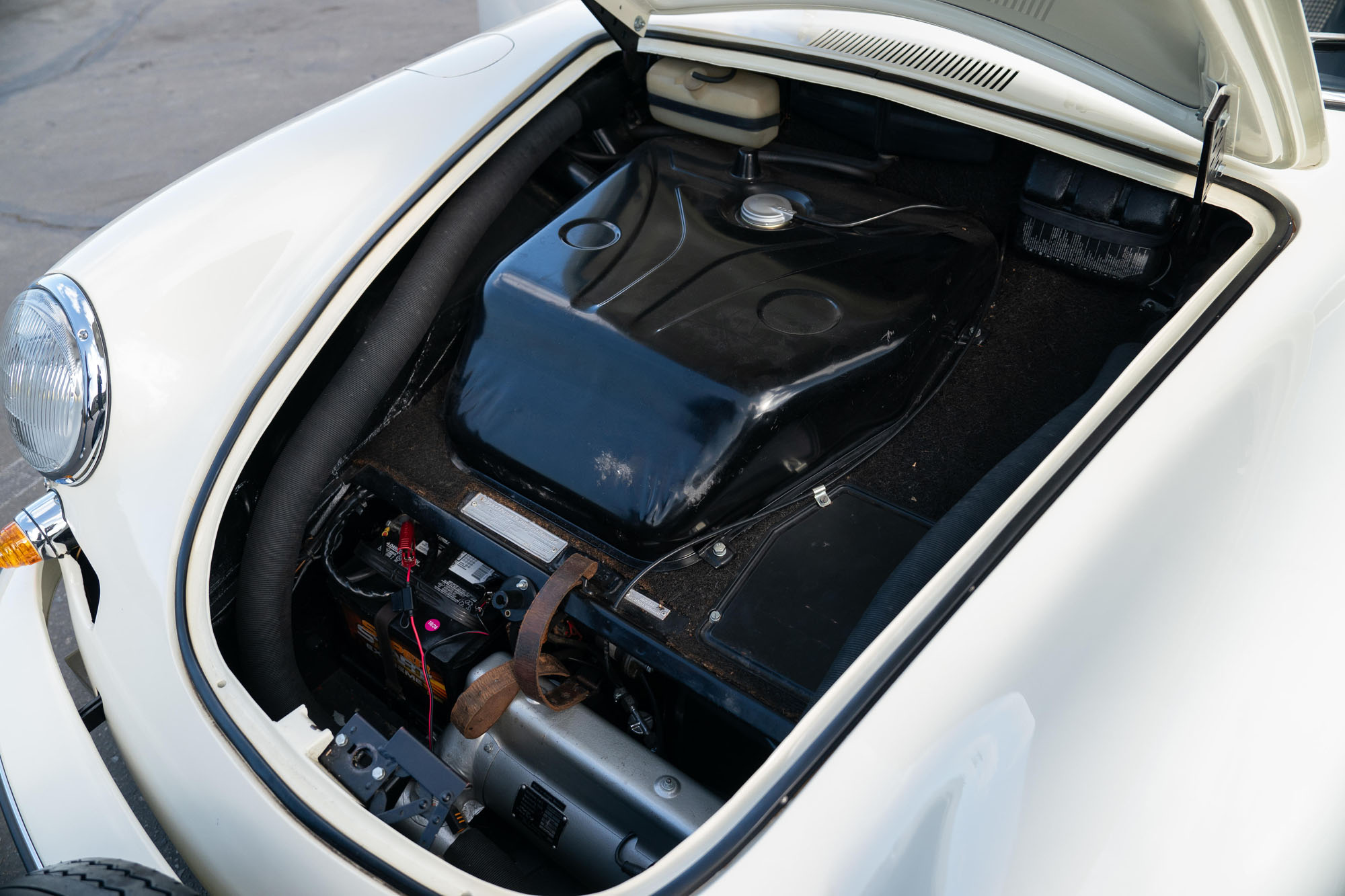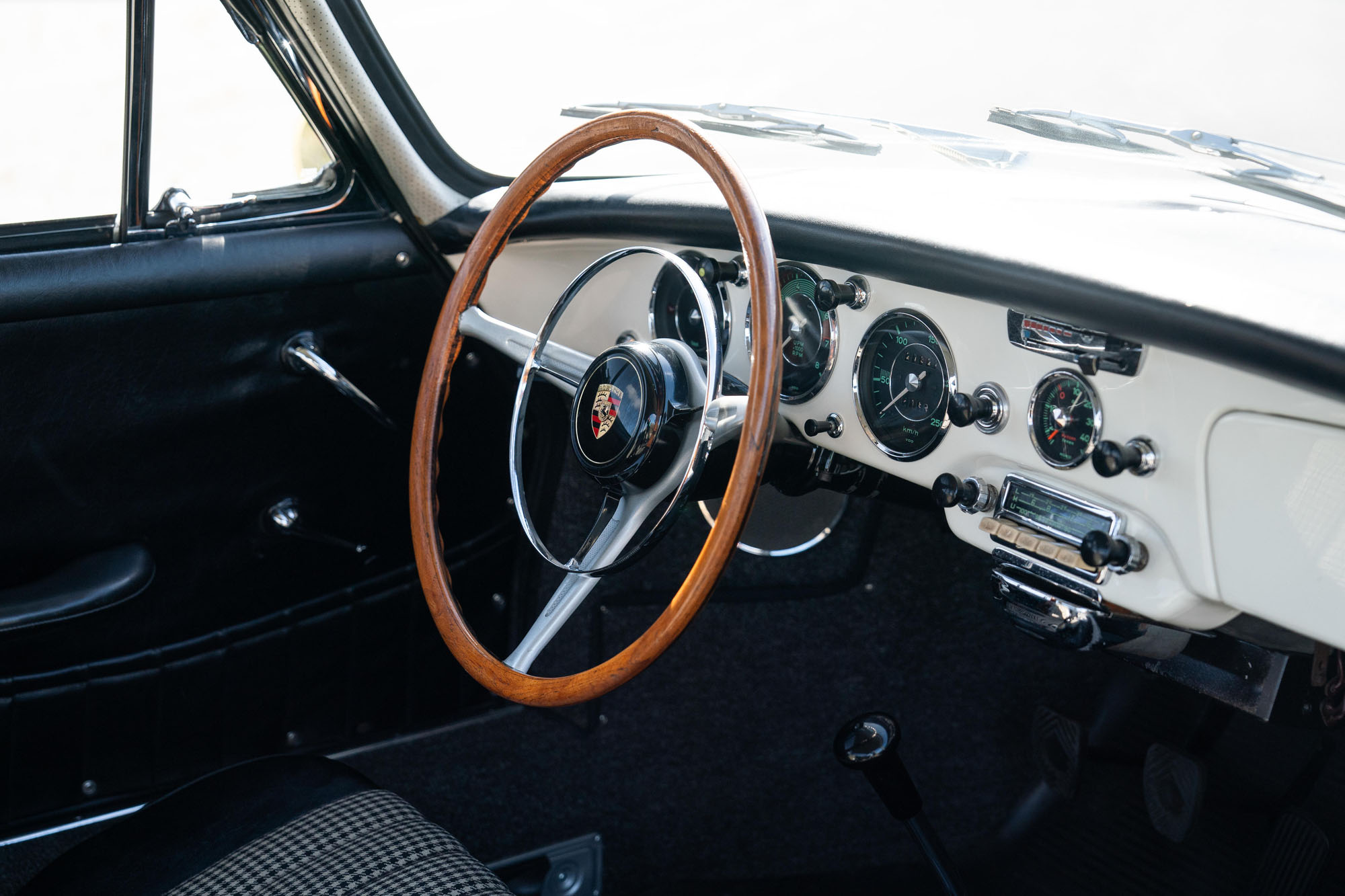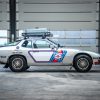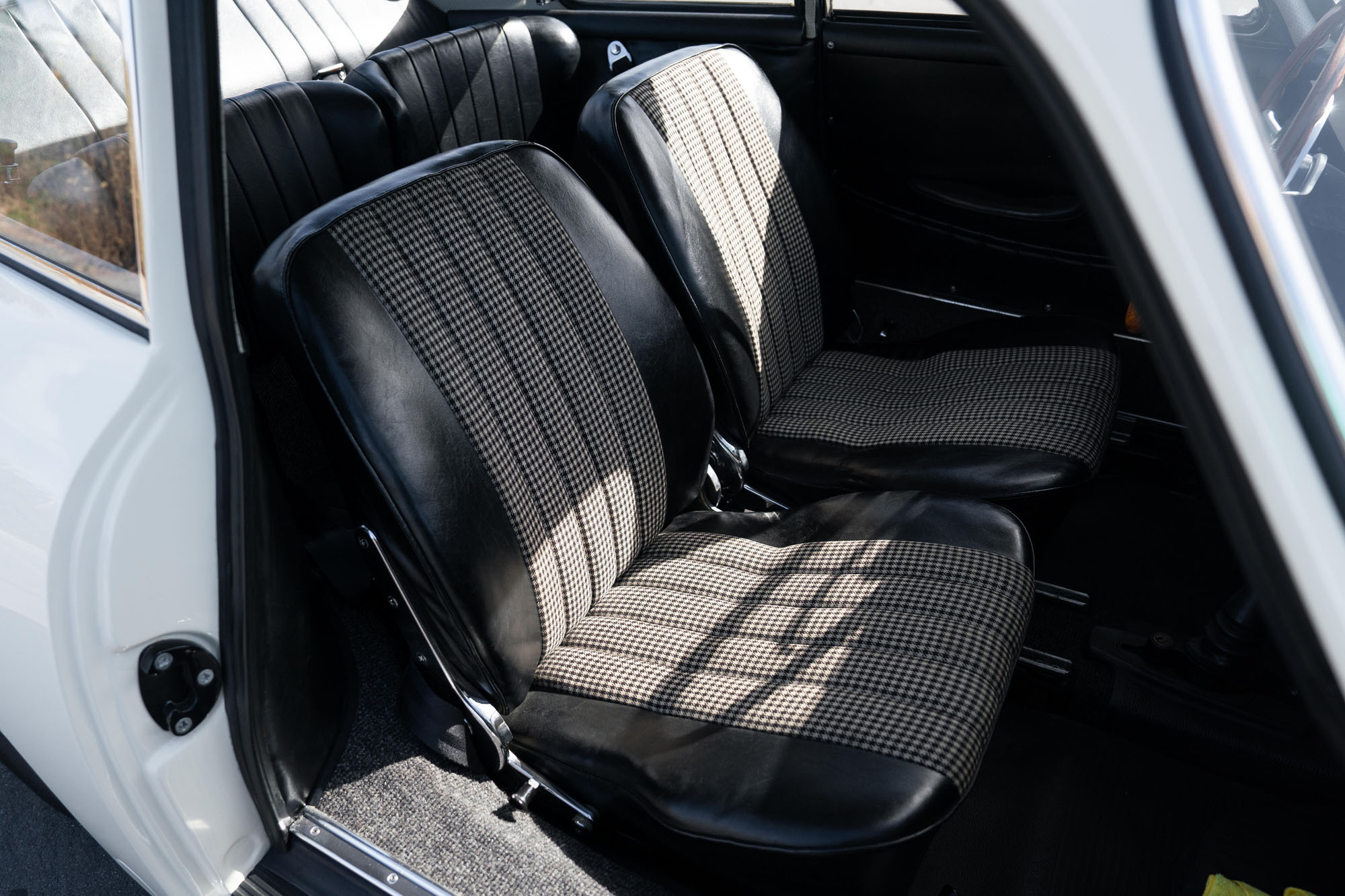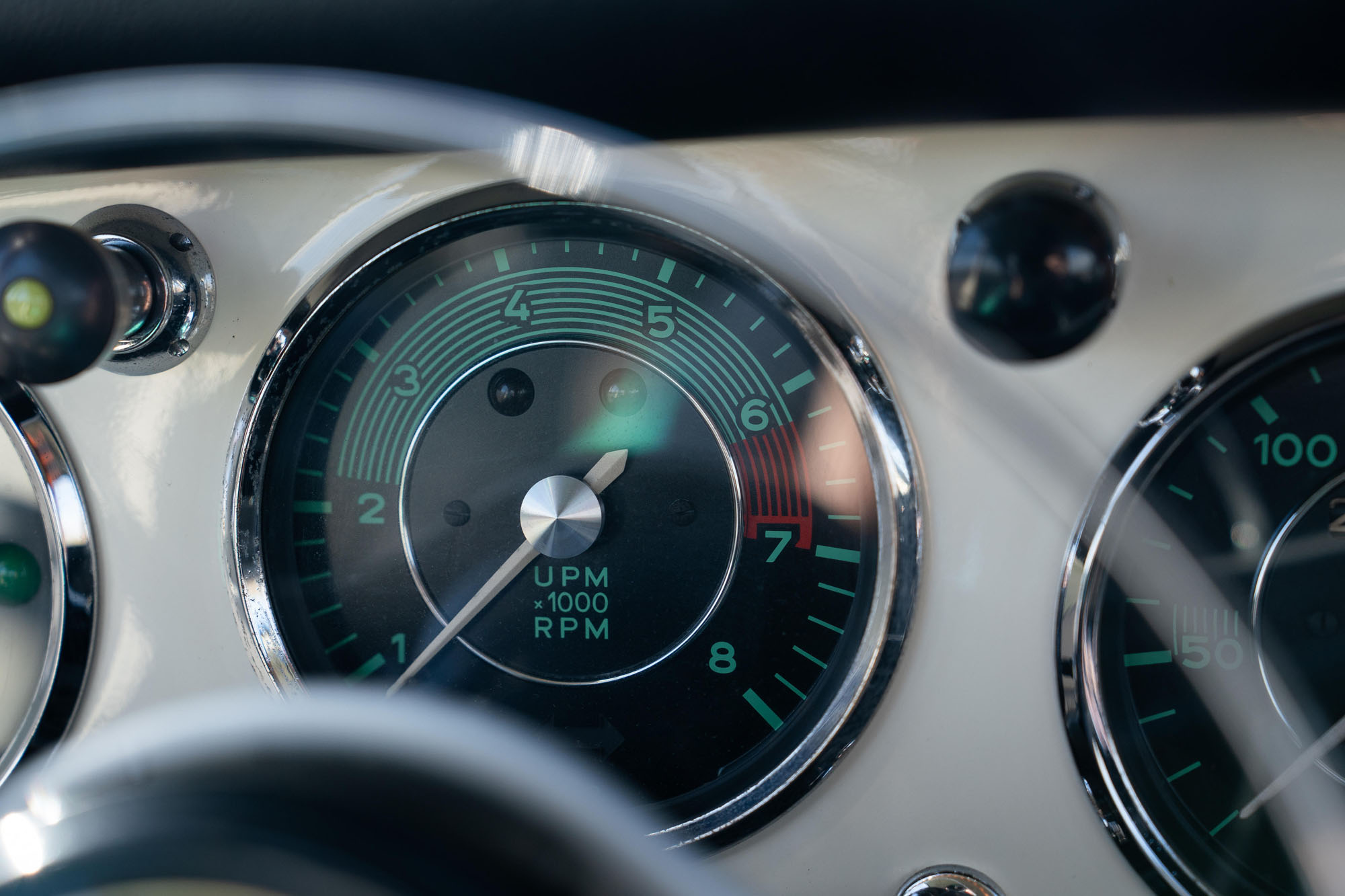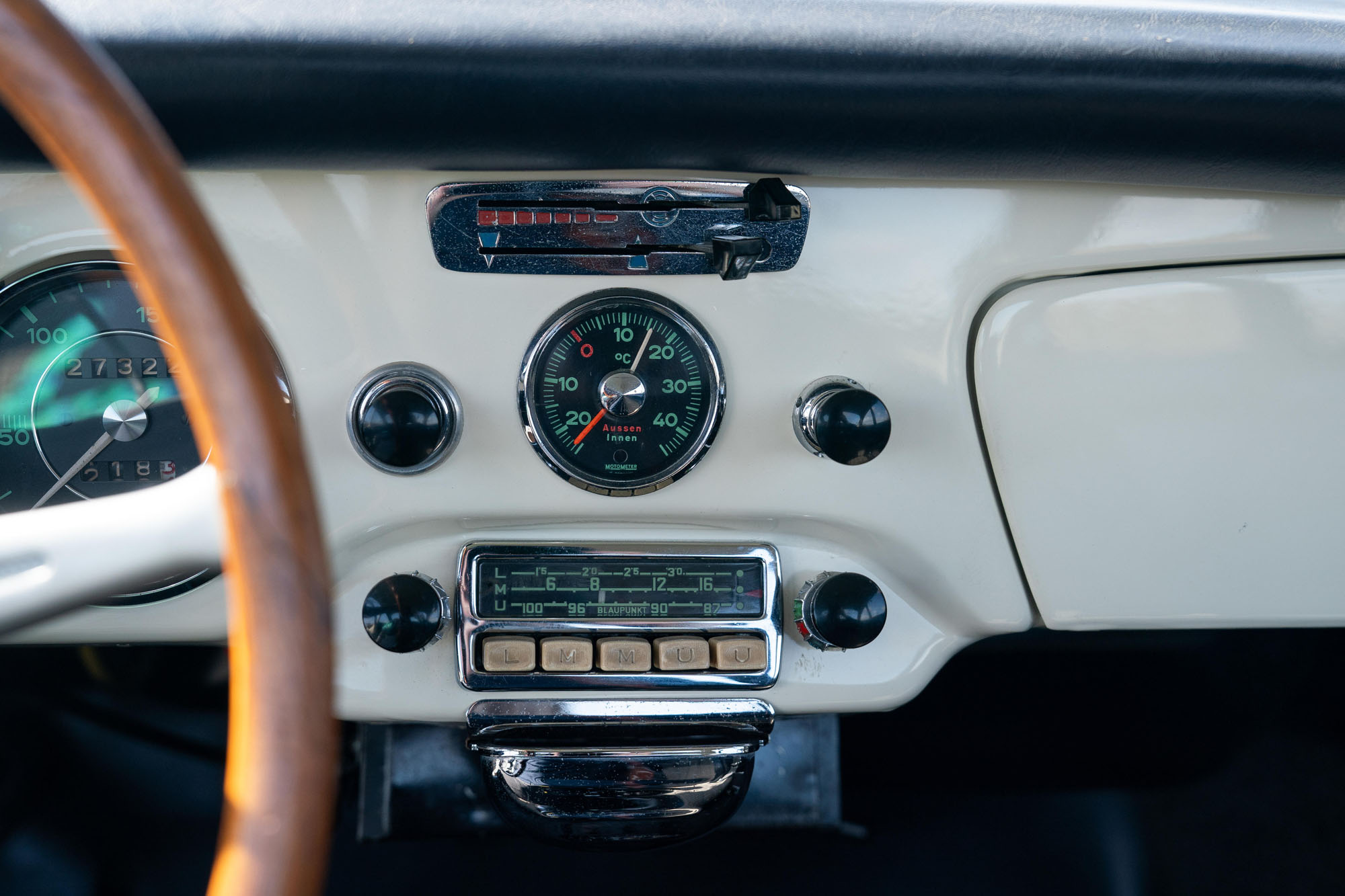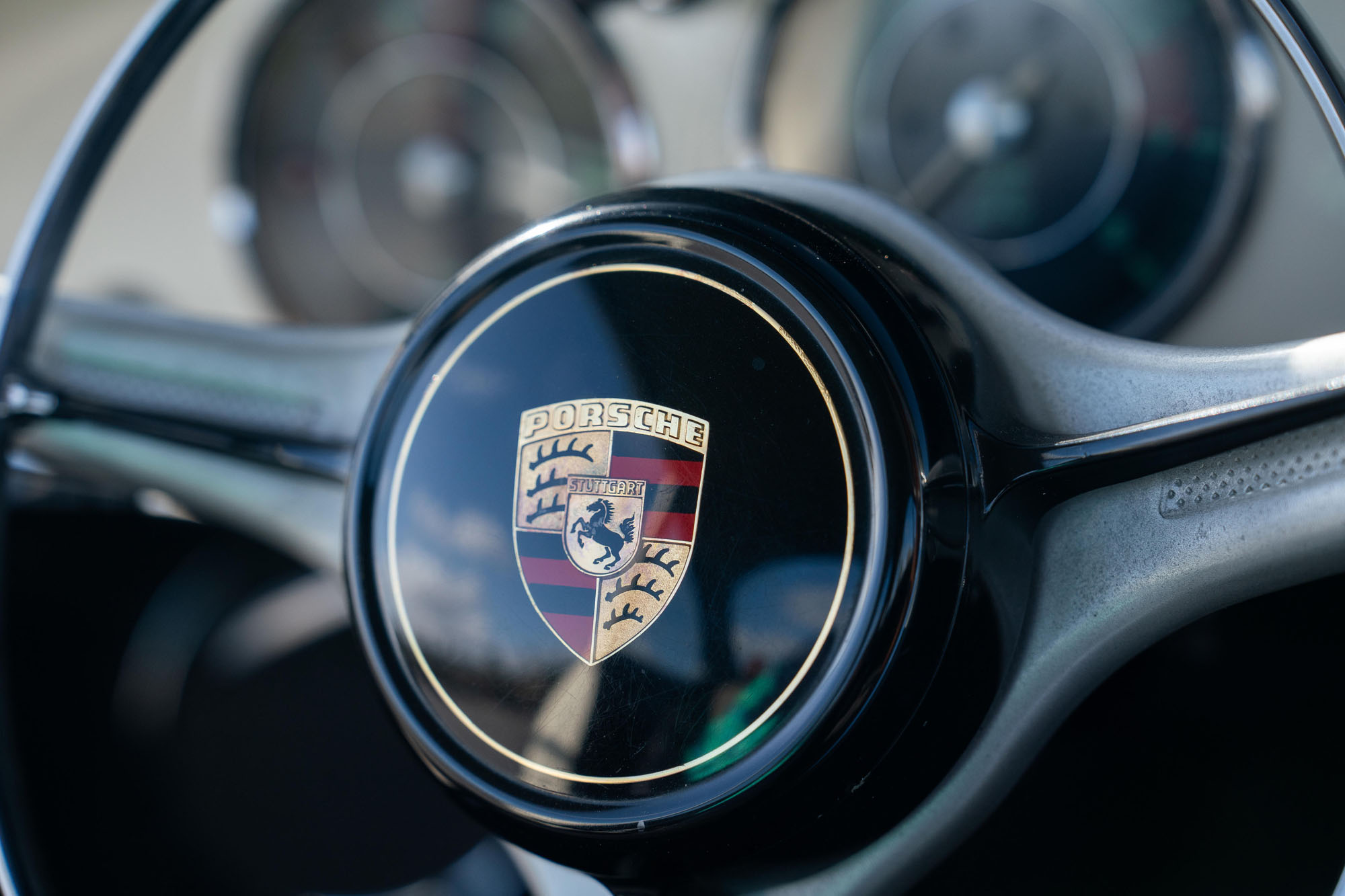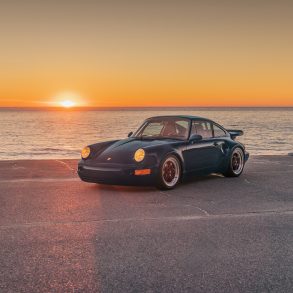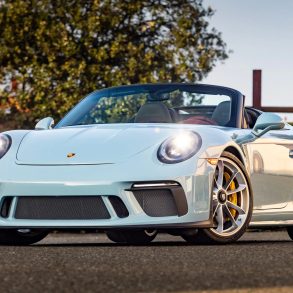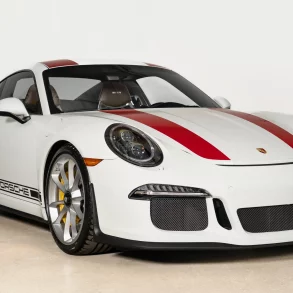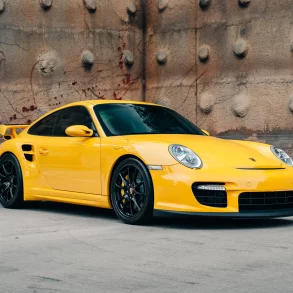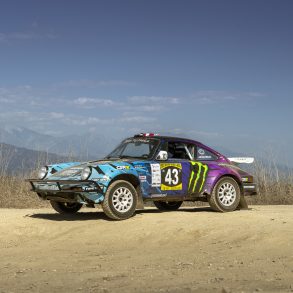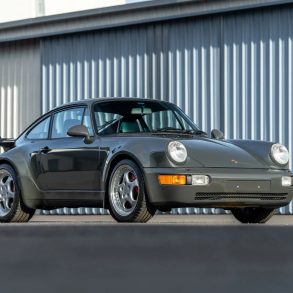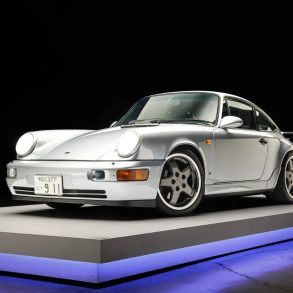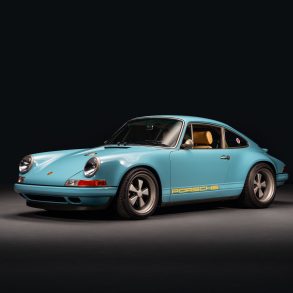Background
Introduced at the 1955 Frankfurt Motor Show, the Porsche 356 Carrera marked the first appearance of this legendary performance car nameplate. Central to the Carrera’s spec sheet was the special race-bred engine developed since 1952. Dr. Ernst Fuhrmann was tasked with reworking the classic Porsche flat-four into a world-class race winner, and in his pursuit, he developed significant engineering advancements over the basic pushrod engine. Fuhrmann’s work included the addition of twin ignition, a pair of twin-throat Solex carburetors, dry-sump lubrication, and dual overhead-cam valve actuation.
Tested at various races during development, the Porsche staff evaluated the high-performance four-cam engine in their personal 356 road cars, despite being originally designed for use in the 550 Spyder racecars. Eventually determining that the 356 provided an opportune platform for the Type 547/1 engine, Porsche used the Frankfurt show to debut the Carrera, named after the famously grueling Mexican road race at which Porsche had dominated the 2-liter class. Initially available in coupe, convertible, and Speedster body styles, the 1600 Carrera GS gained luxurious options over the years, somewhat muting its original performance credentials but cementing the Carrera as the flagship of the Porsche range.
In September 1961, Porsche addressed this perception with an updated Carrera, which is exclusively available as a coupe. The original four-cam engine gained more power courtesy of a bump in displacement to two liters, reclassified as the Type 587/1, resulting in the fastest Porsche road car to date. Recognizing such additional power might be a handful for inexperienced customers, Porsche outfitted the new Carrera with ATE disc brakes all around, the first Porsche road car to be so equipped.
Introduced for the 1962 model year as the Carrera 2, the internally coded GS 2000 featured Reutter’s twin rear-grille T-6 body style, which could easily be mistaken for a standard pushrod 356B were it not for the dual exhausts emerging from a distinctive apron under the rear bumper valance. Approximately 310 examples of the Carrera 2 were made in total. Claiming rarity, performance, and the prestige of being the pinnacle of 356 Carrera development, the Carrera 2 is among the most desirable of vintage roadgoing Porsche cars, a veritable cornerstone of the Stuttgart legend.
Highlights
- A fantastic example of the top-of-the-line 356 Carrera
- One of just 27 Carrera 2s with a factory sunroof
- Highly optioned and presented in the original specification
- Exceptional restoration gaining a feature in Classic Porsche magazine
- Original factory Press Car and Demonstrator
- Documented with a Kardex, factory correspondence, and more
- Regularly serviced by 4-cam specialists
- Includes factory tool kit & jack
Chassis 123845
It is said that “every car has a story”, but some stories are more interesting than others. The marvelous 1963 356B Carrera 2 Grand Sport offered here has an unusual story in that for the first two years of its life, it was in the custody of the Porsche factory, a proud workhorse in their press and promotional fleet.
The Baron Huscke von Hanstein, a title he enjoyed due to his family’s having been titled landowners before WWII, had been a handy amateur racing driver in his youth and, after the war, landed on his feet with a position alongside Dr. Ferdinand Porsche at his fledgling sportscar business. Von Hanstein recognized the need for good marketing and with Porsche’s full support, created an ambitious PR and racing program that paid great dividends through the 1950s and 60s.
In his multifaceted role as Racing Director, Press Director, VIP Director, and head of public relations, the always colorful von Hanstein enjoyed access to virtually anything the company produced. After this well-equipped Carrera 2 coupe emerged from the assembly line on the first of April, 1963, it was assigned to the Works Press Office as a “Werkseigenerwagen”. Von Hanstein almost certainly enjoyed some time behind the steering wheel. A period photograph shows this car parked in the snow outside the factory, and another, in von Hanstein’s biography by Tobias Aichele, shows the Count installing skis to what is almost certainly this car.
As delivered, this Carrera 2 coupe was fully equipped with an optional Eberspacher gas-electric auxiliary heater, retractable sunroof, three-point seatbelts for driver and front-seat passenger, an exterior thermometer, and a clock mounted to the glove box door. There is also a Blaupunkt multi-band radio, speaker, and antenna, a pair of fog lights, and, of course, the Carrera’s signature rear exhaust apron.
This car’s factory Kardex includes hand-entered notes on maintenance performed at Zuffenhausen through 1965 and into 1966, with the odometer recording some 62,000 km. By that time, the car had been sold to its first private owner, Kar Krafft & Söhn GmbH in Duren, Germany, where Mr. Eberhard Hess used it for business travel. Correspondence on file from Mr. Hess documents that he found the original engine consumed a lot of oil, so he returned it to the factory where an already-broken-in replacement was installed (numbered P 97004), thus resolving the matter.
Alas, on one of his winter trips, Hess was involved in a minor crash on the A3 between Köln and Frankfurt. While he escaped injury, there was some front-end body damage, and after receiving an insurance settlement, Hess decided to sell the car – about which he later expressed much regret! He’d only enjoyed it for a year. Documentation then grows thin, but around 1970 or so, it appears the Carrera passed through the hands of a Mr. Kurt Kosel in Krefeld. Around this time, the engine was overhauled by H&H Borgmann, an air-cooled specialist in Krefeld. It was eventually sold to a Mr. Haron of New York City. At that time, the sale included a spare two-liter four-cam engine, a set of steel 5.5″ wheels, and a wood-rimmed steering wheel, which is perhaps the one adorning this car today.
In 1978, this car returned to the UK, was inspected and issued a new MOT and registration papers. The Carrera may have spent some time in France before returning to England and was placed in long-term storage. Around 1998, it finally came into the hands of noted UK Porsche specialist Roger Bray in Exeter. A lengthy and detailed restoration ensued, including the shell being placed into a rotisserie and stripped to bare metal, with corrosion replaced as needed, after which the car was resprayed in its original Light Ivory paint, per the Kardex. Mr. Bray took great pains to retain as much of this car’s factory-installed parts and trim; the black leatherette and Pepita cloth interior with charcoal square-weave carpeting and black rubber floormats is highly original.
The engine, which is understood to be the third such unit fitted to this car, was fully rebuilt by noted northern California Porsche racing shop owner Bob Garretson and is described as being in fine running order, with receipts on file showing regular maintenance, including new cam shafts and lobes fitted in 2016 by Prill Porsche Specialists in Halstead, Essex, UK, and a rebuilt dynamo and carburetor tune by JAZ Porsche in 2021. JAZ serviced the car in August 2023, during which time they performed a cold leak down test, reporting less than 15% leak down across all four cylinders.
Soon after its completion, this car and its intriguing history enjoyed a six-page feature in the August, 2013, issue of Britain’s “Classic Porsche” Magazine, and soon after was acquired by the current owner. It is supplied with a large file of receipts and literature, a correct spare wheel dated 8-62, and what appears to be its original jack and a partial tool roll.
This very rare and desirable Carrera 2 is brimming with character, needing very little to prepare it for the show field, while also being wonderfully suited to regular enjoyment on tours, rallies and events where it’s brilliant race-bred engine can be unleashed and savored at full song.
Coming to Auction
For more information on this car, go HERE.


